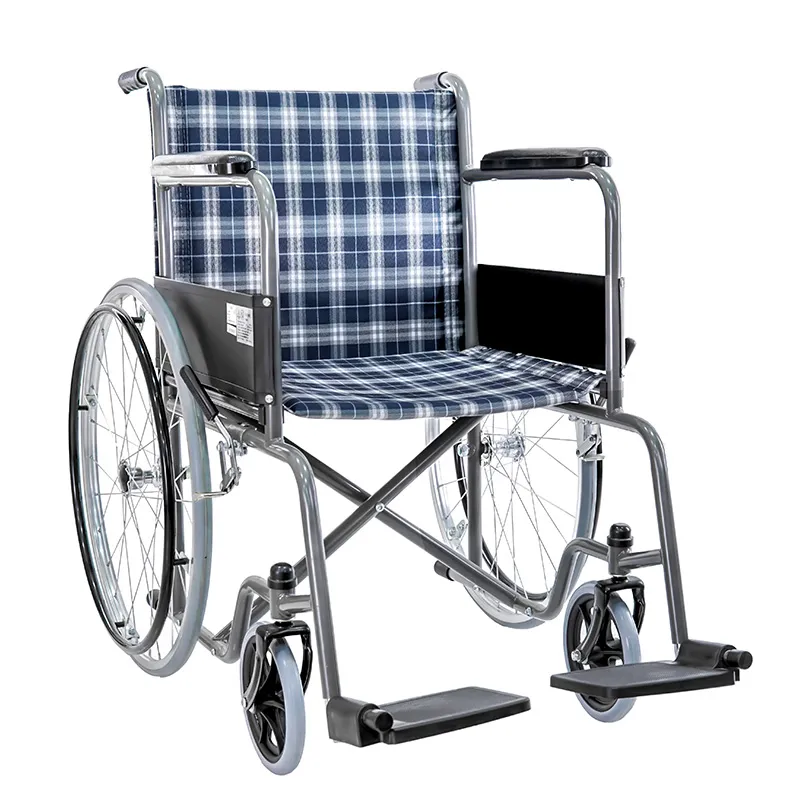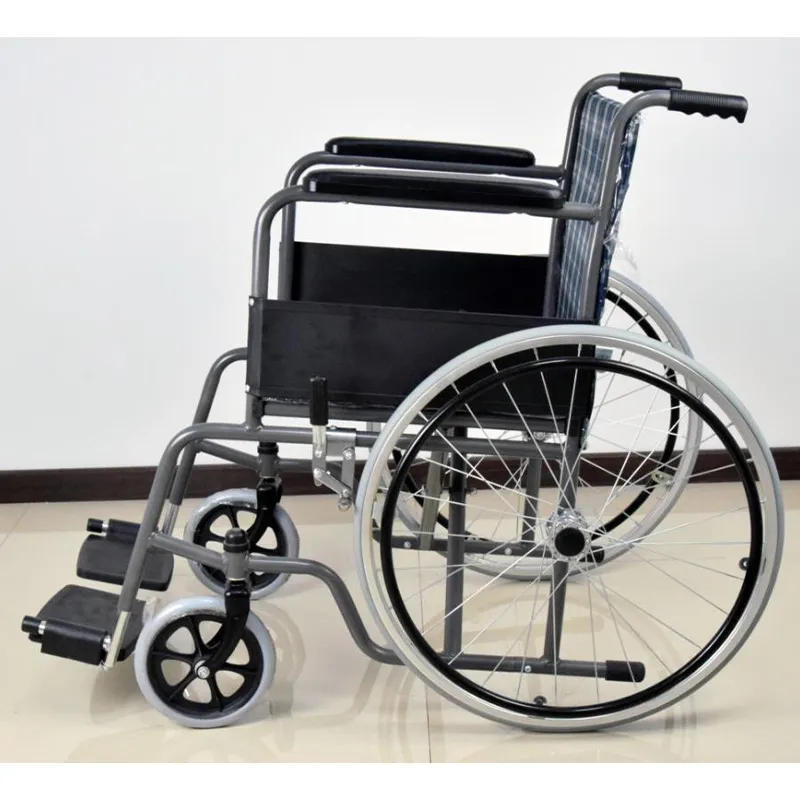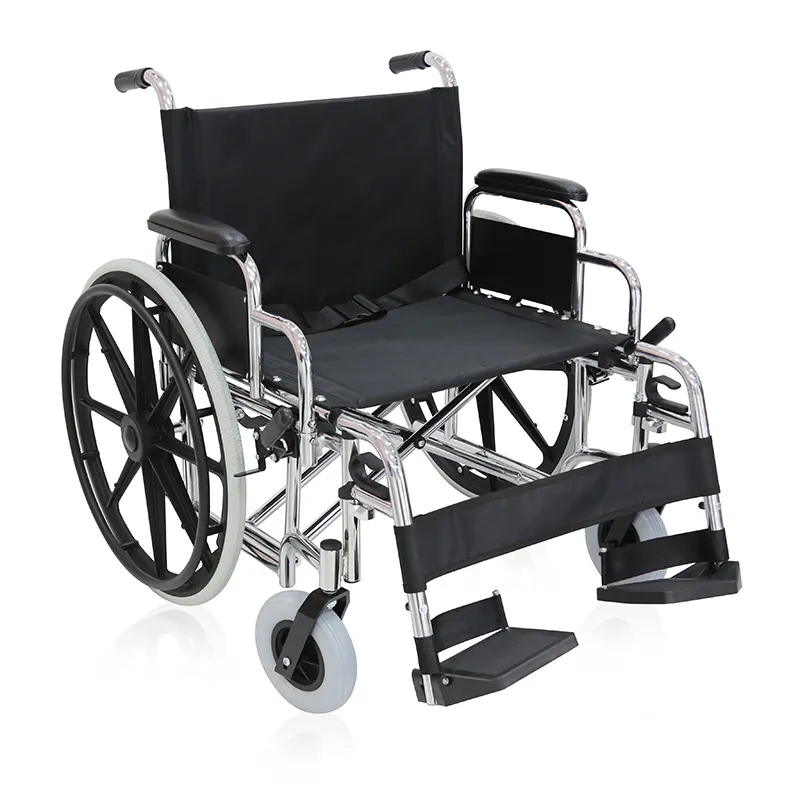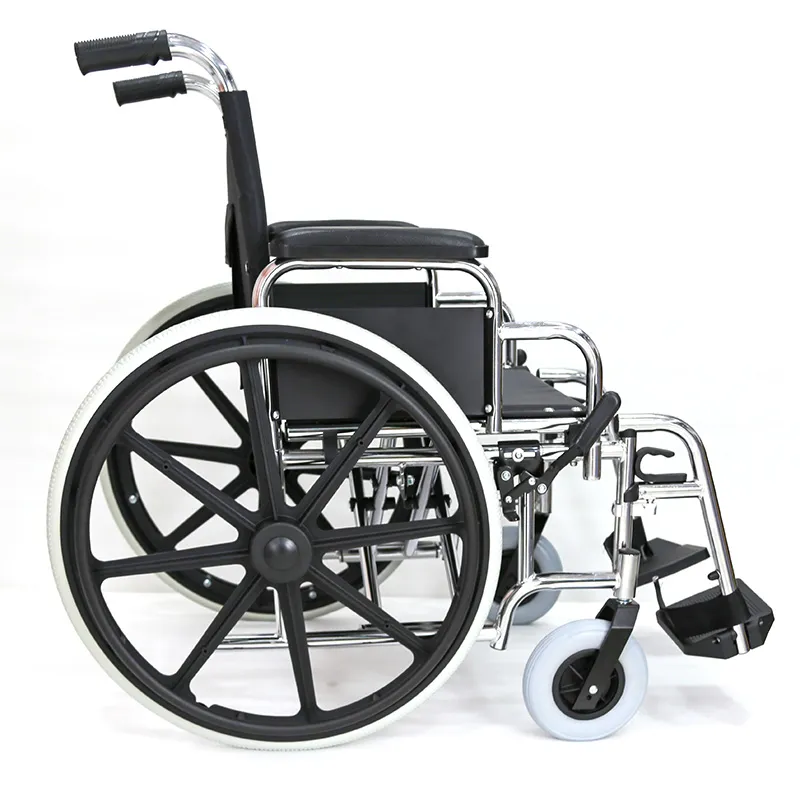
How much does a manual wheelchair weigh?
2024-11-13 15:30
In modern society, with the development of medical technology and rehabilitation equipment, wheelchairs, as a widely used mobility aid, have been continuously improved and applied. Manual wheelchairs, as a classic type of wheelchair, are widely used around the world because of their simple design, low cost and easy operation.
Although technological advances have promoted the emergence of electric wheelchairs and smart wheelchairs, manual wheelchairs are still the first choice for many users, especially in cases of mild mobility impairment, short-distance movement or limited economic budget.

What is a manual wheelchair?
A manual wheelchair is a wheelchair that is manually operated by the user or an accompanying person. Its basic structure includes seats, wheels, armrests and foot pedals. Unlike electric wheelchairs, manual wheelchairs do not have motors and battery packs. They rely on the user's hand strength to push the large wheels for movement, and can also be pushed with the help of others.
Manual wheelchairs generally have the following important components:
1. Seat: The seat is usually made of lightweight and strong materials to ensure comfort and durability. The seats of some wheelchairs can also be adjusted in angle and height to meet the needs of different users.
2. Large wheels: Manual wheelchairs usually have larger rear wheels, which is one of the significant differences between them and other types of wheelchairs. The outer edge of the large wheel is wrapped with manual rings, which the user can push to control the wheelchair forward or backward.
3. Small wheels: The small wheels at the front of a manual-driven wheelchair are mainly used for steering and balancing. These small wheels can be flexibly rotated to help users adjust the direction more conveniently in narrow spaces.
4. Brake system: Manual wheelchairs are usually equipped with manual brakes, which allow users to fix the wheels when parking to prevent the wheelchair from sliding. The design of the brake system ensures that users can remain stable when going uphill or downhill.
5. Footrests: The footrests provide space for feet and are usually foldable, making it easier for users to get on and off the wheelchair. Some wheelchairs also provide adjustable footrests to accommodate users of different heights.

What are the design features of a manual-driven wheelchair?
The design of a manual-driven wheelchair focuses on lightweight, foldable and easy operation while meeting basic functions, which makes it adaptable to different usage scenarios.
1. Lightweight design: Manually driven wheelchairs are usually made of lightweight materials, such as aluminum alloy or titanium alloy, which not only reduces the weight of the wheelchair, but also improves the maneuverability and convenience of the wheelchair. The use of lightweight materials helps reduce the effort required by the user to push the wheelchair, especially during long-term use, the lightweight design can effectively reduce fatigue.
2. Folding design: For easy carrying and storage, most manually driven wheelchairs can be folded. Folding wheelchairs can be easily put into the trunk of a car or stored in a small space, making it more convenient for users when traveling or storing.
3. Comfort considerations: Manually driven wheelchairs are also carefully designed for comfort. The seat and backrest of the wheelchair are usually made of padded materials to ensure comfort for long-term sitting. In addition, many manual wheelchairs provide adjustable armrests and footrests to meet the personalized needs of users of different body shapes.
4. Ease of operation: One of the design principles of manually driven wheelchairs is ease of operation. Users can easily control the forward and backward movement of the wheelchair by manually pushing the wheels, and can adjust the direction by turning the front wheels. This intuitive operation allows most users to master the use of wheelchairs without professional training.
How much does a manual wheelchair weigh?
The weight of a manual wheelchair is one of the important factors that affect the user experience. The weight of the wheelchair not only directly affects the force required by the user to push it, but also affects the convenience of carrying and transporting the wheelchair. In general, the weight range of manual wheelchairs varies depending on the material, design and function.
1. Lightweight manual wheelchair: Lightweight manual wheelchairs usually use lightweight materials such as aluminum alloy and carbon fiber, and the weight is generally between 8 and 15 kg. This type of wheelchair has a simple design and relatively few functions. It is suitable for users with better mobility or people who need to carry and move the wheelchair frequently. The advantage of a lightweight wheelchair is that the user can push and carry it more easily, but due to its light structure, it may not be as stable as a heavy wheelchair on some complex terrain.
2. Standard manual wheelchair: The weight of a standard manual wheelchair is usually between 15 and 20 kg. This type of wheelchair uses sturdy and durable materials and has relatively complete functions. It is suitable for users who use it for a long time or have weak mobility. Standard wheelchairs are more stable than lightweight wheelchairs, and usually have better durability and comfort, making them suitable for daily use.
3. Heavy manual wheelchairs: To meet the needs of heavier users, heavy manual wheelchairs are designed to be more sturdy, usually made of heavy materials such as steel, and can weigh more than 20 kg, or even 30 kg. This type of wheelchair can provide greater carrying capacity and better stability, but correspondingly, due to its heavy weight, it requires more force to push, and is relatively inconvenient to move and carry.
The weight of a wheelchair is not only related to the materials used, but also to its functional configuration. For example, a wheelchair with more auxiliary functions may require additional weight. Although lightweight wheelchairs are more labor-saving when pushed, heavy wheelchairs may be more suitable for users who need higher stability and carrying capacity.

What are the factors that affect the weight of a manually driven wheelchair?
The weight of a manually driven wheelchair is not determined solely by the material, but is also affected by multiple factors, including design, purpose, and user needs.
1. Material selection: Material is one of the main factors that determine the weight of a manually driven wheelchair. Lightweight materials such as aluminum alloy and carbon fiber are widely used in the manufacture of lightweight wheelchairs, while strong and durable materials such as steel are often used in standard or heavy wheelchairs. The difference in density and strength of these materials directly affects the weight of the wheelchair.
2. Structural design: The design of the wheelchair is also a key factor affecting its weight. Simple design means fewer parts and connection structures, so the total weight is lighter; while complex designs, especially wheelchairs with adjustable seats, enhanced support systems or folding functions, tend to be heavier.
3. Functional configuration: Different manual-driven wheelchairs are equipped with different functions. For example, additional functions such as brake systems, adjustable armrests, and comfortable padded seats will increase the weight of the wheelchair. Therefore, users need to weigh the relationship between function and weight when choosing a wheelchair to ensure that while meeting basic needs, it does not bring too much burden to operation and handling.
4. Load-bearing requirements: For users with larger bodies or who need additional load-bearing, the weight of the wheelchair will inevitably increase. Heavy wheelchairs not only need to use stronger materials, but also have thicker support structures, which will increase their weight.

What are the usage scenarios of manual-driven wheelchairs?
Manually driven wheelchairs are widely used in multiple scenarios due to their simple design, easy operation and economy. Whether it is daily use or temporary use during short-term rehabilitation, manual wheelchairs can provide good mobility support.
1. Medical institutions: Manually driven wheelchairs are common mobility aids in hospitals or rehabilitation centers. Whether it is daily mobility of patients or short-term rehabilitation transition, manual wheelchairs can effectively help patients with limited mobility to move from the bed to the treatment area.
2. Home and daily life: For home users, manually driven wheelchairs are an economical choice. It is not only convenient for family members or caregivers to push, but the folding design makes it easy to store and carry, suitable for daily use.
3. Public places: Manually driven wheelchairs are also widely used in public places such as airports, train stations and large shopping malls. These places often provide manual wheelchairs for customers with limited mobility to help them travel smoothly.








